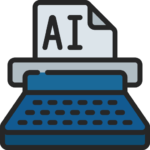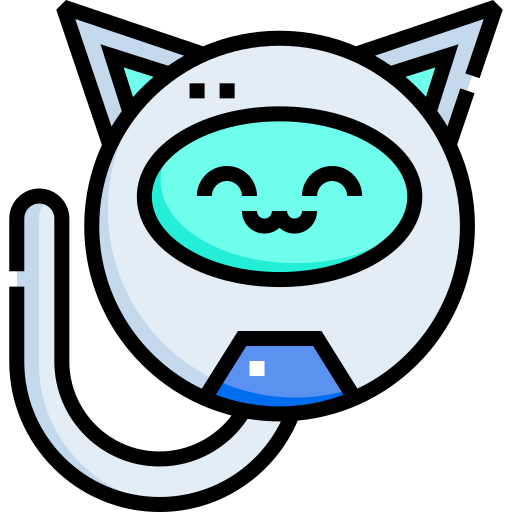
AI content curation is the process of using artificial intelligence (AI) technologies to automatically discover, gather, organize, and present content from various sources to cater to specific interests or preferences of users. Content curation has become increasingly important in the digital age, where there is an overwhelming amount of information available on the internet. AI algorithms can efficiently filter and personalize content, providing users with relevant and valuable information.
Here’s a detailed breakdown of the concept of AI content curation:
- Content Discovery: AI content curation starts with content discovery. AI algorithms scan the internet, social media platforms, blogs, news sites, and other sources to find new and relevant content on specific topics or keywords. These algorithms can crawl through vast amounts of data at a much faster pace than humans, allowing them to discover content efficiently.
- Content Filtering: After discovering content, the AI filters out irrelevant or low-quality material. This is typically done by applying various criteria such as relevance, credibility, recency, and popularity. The AI learns from user interactions, continuously improving its filtering capabilities to better match users’ interests.
- Personalization: One of the key benefits of AI content curation is personalization. The AI analyzes user preferences, behavior, and past interactions with content to deliver curated content tailored to individual tastes. This personalization enhances user engagement and satisfaction as they receive content that aligns with their interests.
- Content Organization: Once the AI identifies relevant content, it organizes it based on specific categories, themes, or topics. This categorization simplifies navigation for users and helps them find content that matches their interests more easily.
- Content Presentation: AI algorithms determine how to present curated content to users. This can include creating personalized content feeds, email newsletters, or recommendation systems. The goal is to optimize the presentation to keep users engaged and encourage them to explore more content.
- Content Analysis: AI content curation can also involve analyzing the content itself. The AI may use natural language processing (NLP) to extract key information from articles or texts, identify sentiments, and detect trends or patterns. This analysis can be useful in understanding the content’s quality and relevance further.
- Continuous Learning: AI content curation systems are designed to continuously learn from user interactions and feedback. As users engage with the content, the AI gathers data on what they like or dislike, how long they spend on specific articles, and what they share with others. This feedback loop allows the AI to refine its recommendations over time and deliver increasingly accurate and relevant content.
- Ethics and Bias: AI content curation raises concerns about ethics and potential bias in content selection. AI algorithms may unintentionally favor certain perspectives or sources, leading to a skewed presentation of information. Developers and providers of AI curation systems must be vigilant in addressing bias and ensuring content diversity to present a balanced view.
In summary, AI content curation is a powerful tool for managing information overload, delivering personalized content experiences, and enhancing user engagement. When done responsibly, it can provide users with valuable and relevant information while driving traffic and user retention for content providers.

It’s always best to conduct thorough research and read the latest reviews to find the most suitable tool for your specific needs. Here are some popular AI content curation tools:
- Google News API: Google News API allows developers to access the latest news articles from around the web, filter them by specific topics, and integrate them into their applications. It provides a wealth of information that can be curated and personalized using AI algorithms.
- Flipboard: Flipboard is a popular content curation platform that uses AI to personalize news and articles for its users. It aggregates content from various sources and presents it in a visually appealing magazine-style format.
- Pocket: Pocket is an AI-powered content curation tool that allows users to save articles, videos, and other content to read or view later. It uses AI algorithms to recommend relevant content based on users’ interests and reading habits.
- Feedly: Feedly is a content aggregation tool that uses AI to curate and organize news and blog feeds from different sources. It offers a personalized content feed based on the user’s preferred topics and sources.
- Curata: Curata is an AI-driven content curation platform designed for businesses. It helps marketers discover, curate, and share relevant content with their target audience. The tool uses AI to identify content trends and improve content distribution.
- Trapit: Trapit is an AI-powered content curation and social selling platform that helps businesses find and share engaging content with their audiences. The tool uses machine learning algorithms to understand user preferences and deliver relevant content recommendations.
- Scoop.it: Scoop.it is a content curation platform that uses AI to discover, curate, and distribute content on various topics. It offers content suggestions and allows users to create and share content hubs.
- Cortex: Cortex is an AI content marketing platform that uses machine learning to analyze and understand content performance. It helps marketers identify trending topics, optimize content strategies, and improve engagement.
- IBM Watson Discovery: IBM Watson Discovery is an AI-powered platform that enables content curation and discovery across various data sources. It uses NLP and machine learning to understand unstructured data and provide relevant insights.
- OpenAI GPT-3: OpenAI’s GPT-3 is a powerful language model that can be used for AI-generated content curation. Developers can build custom applications that leverage GPT-3’s language capabilities to find and summarize relevant content.
Remember that each tool has its strengths and limitations. When choosing an AI content curation tool, consider factors such as the level of personalization, ease of integration, pricing, data privacy, and the specific features that align with your content curation needs. Additionally, stay updated with the latest advancements in AI and content curation tools to make informed decisions.






